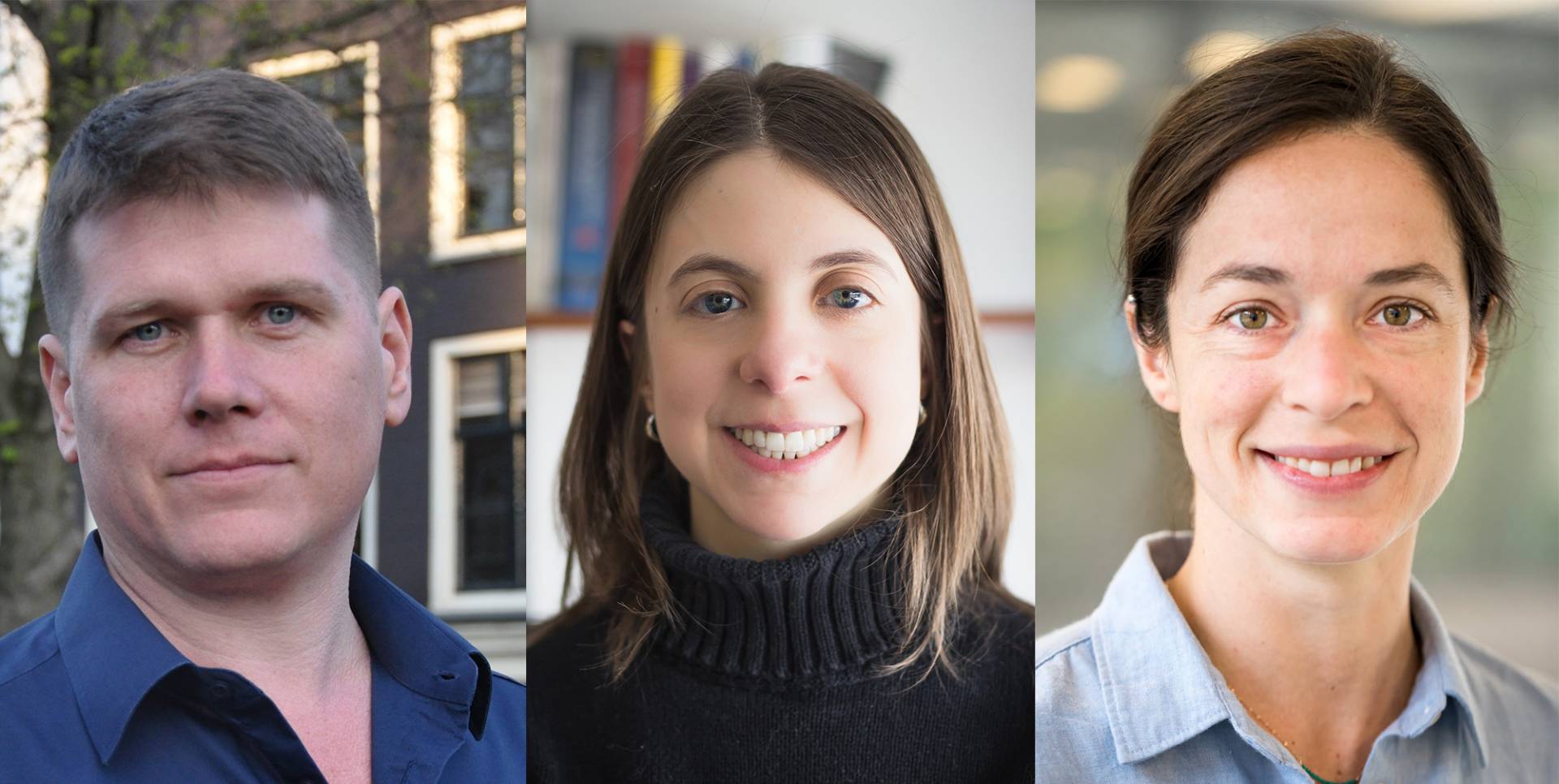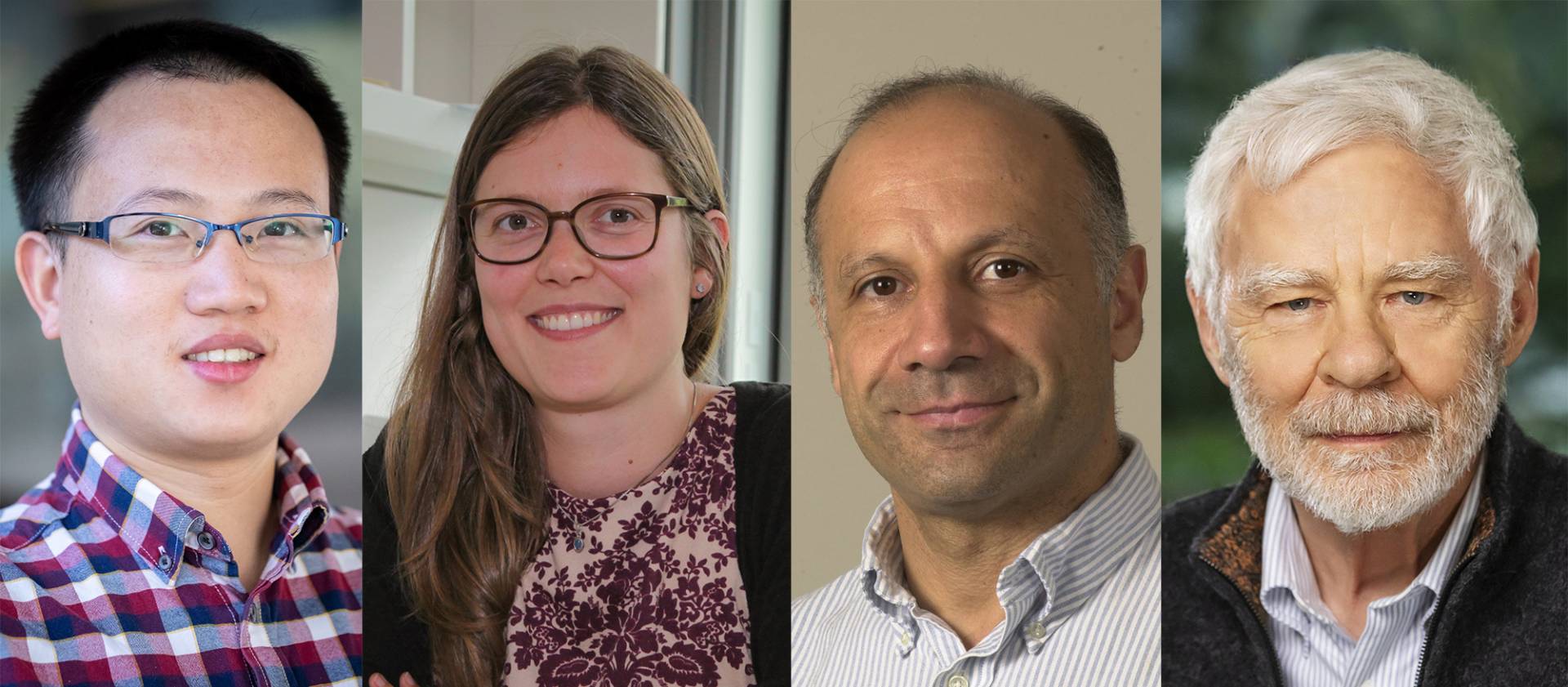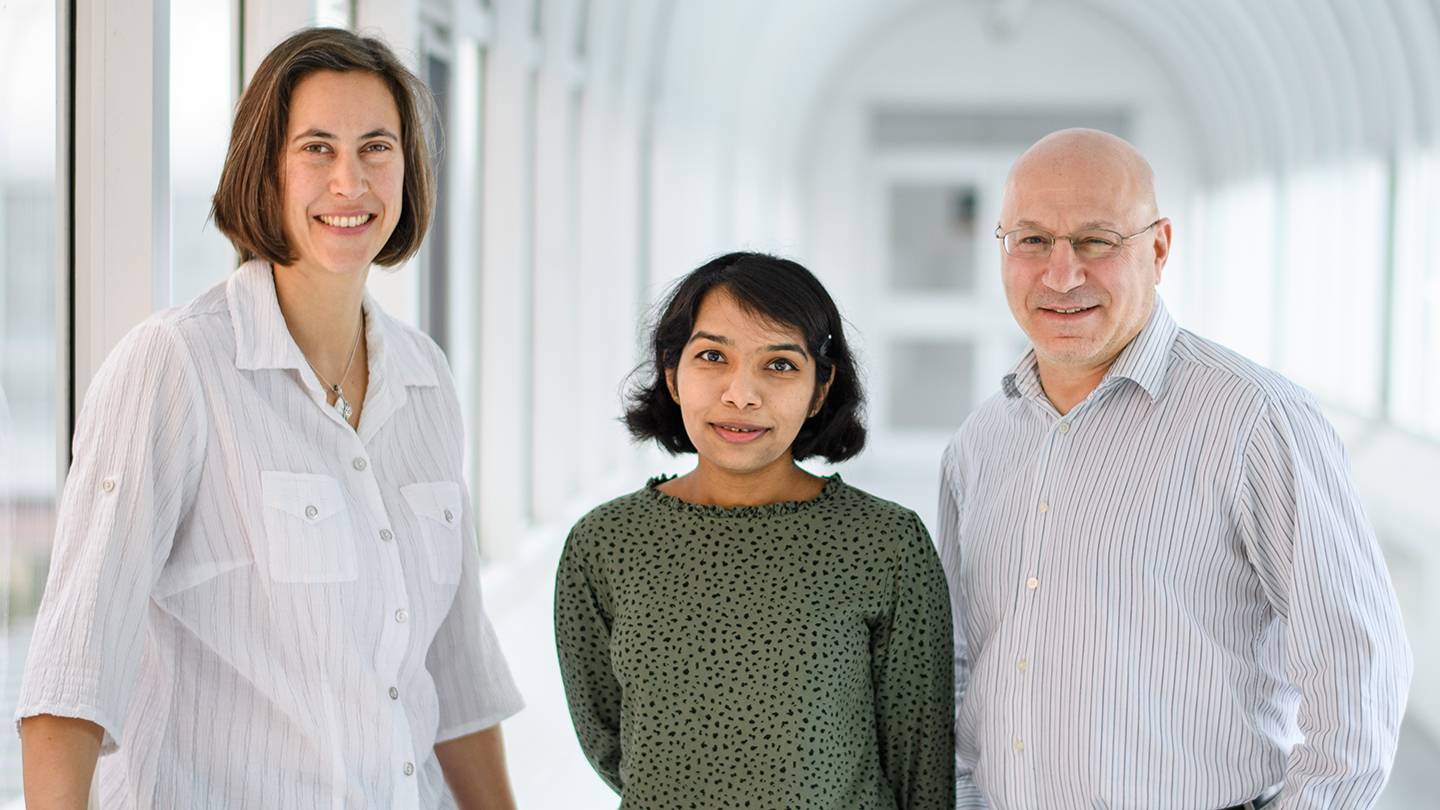Three projects that aim to pioneer new discoveries with the potential to transform entire fields of inquiry and propel innovation have been awarded funding through the Eric and Wendy Schmidt Transformative Technology Fund.
New quantum materials that promise to propel the communications of the future, an AI-driven search to uncover the fundamental laws of physics, and a project to build biomolecular motors have been selected for funding through the Eric and Wendy Schmidt Transformative Technology Fund.
The three projects, led by faculty teams from across the sciences and engineering, aim to pioneer new discoveries with the potential to transform entire fields of inquiry and propel innovation. The projects were selected following a competitive application process in which proposals were evaluated for their potential to accelerate progress on substantial challenges through strides in the development of knowledge and technological capabilities.
“These are profoundly significant projects that have the potential to take both our fundamental knowledge and technical capabilities to new, exciting levels,” said Dean for Research Pablo Debenedetti, the Class of 1950 Professor in Engineering and Applied Science and a professor of chemical and biological engineering. "Rather than iterate, these proposals aim to make major advances in a discipline, and have the capacity to shift the conversation entirely."
The Eric and Wendy Schmidt Transformative Technology Fund spurs the exploration of ideas and approaches that can profoundly enable progress in science or engineering. Eric Schmidt, the former chief executive officer of Google and former executive chairman of Alphabet Inc., Google’s parent company, earned his bachelor’s degree in electrical engineering from Princeton in 1976 and served as a Princeton trustee from 2004 to 2008. He and his wife, Wendy, a businesswoman and philanthropist, created the fund in 2009. Including this year’s three awards, the fund has supported 27 research projects at Princeton.

From left: Peter Elmer, senior research physicist, physics; Mariangela Lisanti, associate professor of physics; and Isobel Ojalvo, assistant professor of physics
Bringing artificial intelligence to the search for new discoveries in physics
Embarking on a quest to explore the fundamental mysteries of the universe, a team of physicists will bring the power of artificial intelligence (AI) to the exploration of the subatomic building blocks of matter.
Despite major strides in understanding the physical laws that govern the universe, many open questions remain, including the nature of dark matter and dark energy, which together make up 95% of the universe. A team led by Senior Research Physicist Peter Elmer, Associate Professor of Physics Mariangela Lisanti and Assistant Professor of Physics Isobel Ojalvo will develop methods for applying AI as a tool for searching for new physical phenomena in experiments conducted at particle accelerators such as CERN’s Large Hadron Collider (LHC).
Experiments at the LHC have validated the leading theory of the universe’s makeup, the Standard Model, by confirming theoretical predictions such as the existence of the Higgs particle. Yet, these findings fail to address unsolved questions inadequately explained by the Standard Model, including dark matter, dark energy and the mass of the neutrino. New theories are needed — but how does one conduct a search for new principles of physics when one doesn’t know what to look for?
AI can assist in this quest by searching through the massive amount of data resulting from particle collision experiments for novel or unexpected results. The team will develop AI-driven algorithms that search for anomalies in the data that hint at new phenomena. Through the training and deployment of AI software, the team will evaluate particle-collision data to look for new physical laws that may explain the unexplained facets of our universe.

From left: Sanfeng Wu, assistant professor of physics; Leslie Schoop, assistant professor of chemistry; Mansour Shayegan, professor of electrical and computer engineering (ECE); and Loren Pfeiffer, senior research scholar in ECE
Station X: An extreme environment for quantum discoveries
Drawing on recent discoveries in quantum materials, a team from the departments of physics, chemistry, and electrical and computer engineering will build a new site for quantum exploration that features some of the most extreme conditions on Earth — including ultra-low temperatures, ultra-low and ultra-high pressures, and strong magnetic fields.
Technologies that utilize quantum properties could unlock new capabilities in computing, communications and many other areas. Whereas much research has focused on exotic quantum properties in metals and semi-metals, few studies have looked for quantum behaviors in electrical insulators — materials in which electrons cannot move freely — primarily due to the lack of methods for observing these properties in insulators. Recent work by teams at Princeton have detected intriguing examples of quantum phases in insulators and semi-conductors, but exploring quantum behaviors in these systems requires specialized conditions and new experimental approaches.
To make transformative discoveries in the emerging area of quantum insulators, a team led by Assistant Professor of Physics Sanfeng Wu, Assistant Professor of Chemistry Leslie Schoop, Professor of Electrical and Computer Engineering Mansour Shayegan, and Senior Research Scholar in Electrical and Computer Engineering Loren Pfeiffer will build an experimental research facility in Princeton’s Jadwin Hall called Station X.
The station will house equipment with which to create extreme temperatures, pressures, magnetic fields, materials purity and other conditions that enable the researchers to evaluate materials with hidden quantum phases. The team will develop advanced measurement systems that combine electronics and optics to provide an unprecedented platform that can explore the synthesis and measurements of a wide range of quantum materials. This project, combining Princeton’s expertise in chemistry, engineering and physics, will ensure a leading role for Princeton in the emergence of new areas of quantum science.

From left: Sabine Petry, associate professor of molecular biology; Akanksha Thawani, a 2020 Ph.D. graduate in chemical and biological engineering; and Howard Stone, Donald R. Dixon '69 and Elizabeth W. Dixon Professor of Mechanical and Aerospace Engineering
Biologically inspired nanoscale motors and factories
Inspired by the body’s own biological machinery, a team of molecular biologists and mechanical engineers will design tiny motors and perhaps eventually entire factories dedicated to treating diseases.
The technology for building these molecular robotics draws on recent discoveries at Princeton about the nature of the cell’s skeleton, which consists of long, thin proteins known as microtubules. Nature is adept at constructing devices with moving microtubules that perform work such as propelling movement of single-celled organisms or dividing chromosomes within cells. One such device, the mitotic spindle, consists of microtubule strands that attach to chromosomes and pull them apart during cell division. Microtubules can exert force on other molecules by pulling or pushing against them, they can separate molecules or propel them together, and they can self-assemble into new structures.
Princeton researchers led by Associate Professor of Molecular Biology Sabine Petry have discovered how spindles form and have uncovered molecular mechanisms by which to control them. Petry will team with Howard Stone, the Donald R. Dixon '69 and Elizabeth W. Dixon Professor of Mechanical and Aerospace Engineering, whose expertise in fluid mechanics will help build miniature channels and chips, in which the microtubule-based machines will be assembled.
The team has laid plans to build several types of microtubule-based nanoscale devices, including bio-actuators, which are capable of performing a task such as moving a particle or molecule from one place to another. By connecting microtubule-based machines via channels, guided by fluid streams into certain directions, the researchers will create nanosized assembly lines and potentially eventually factories. The researchers envision this microtubule-based nanotechnology as opening up an entirely new field of science, making complex manipulations of molecules and other small structures possible at the nanoscale.





